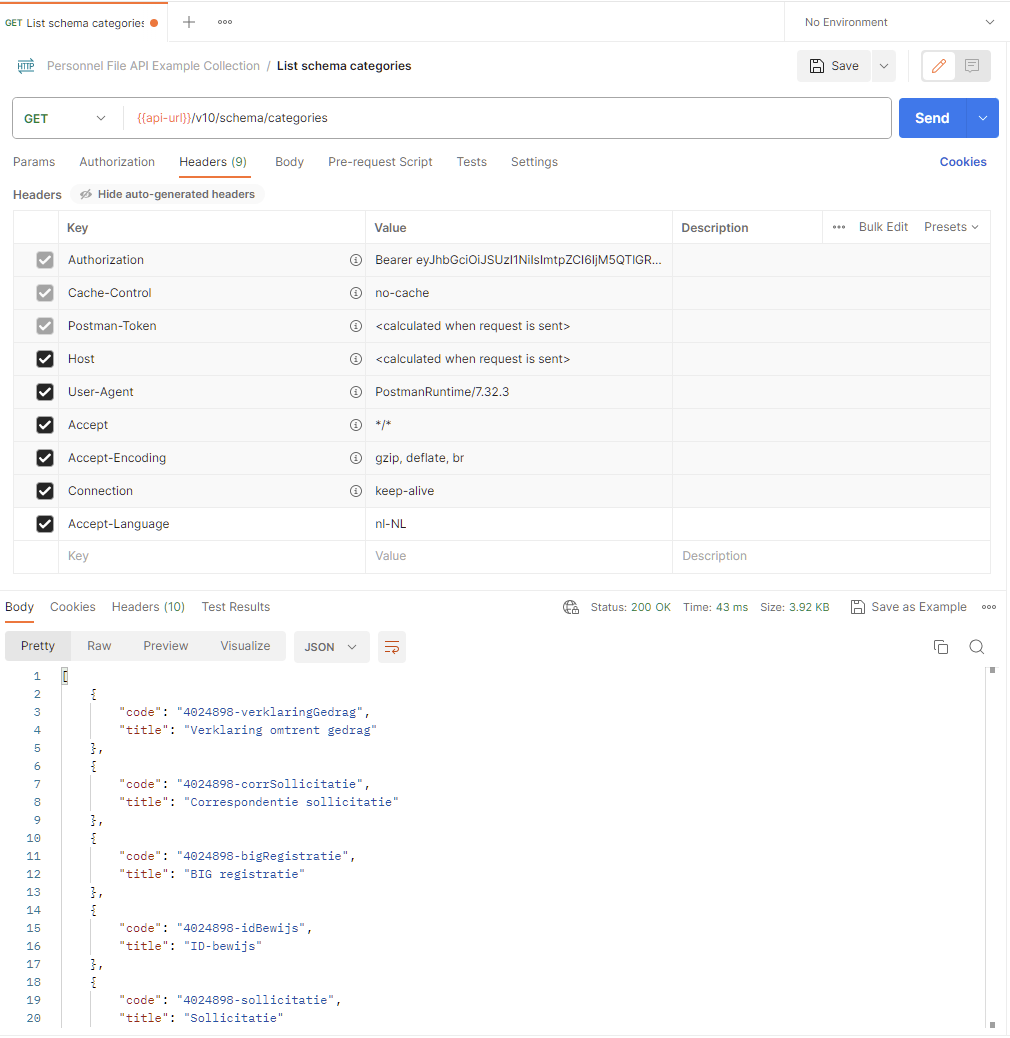This section has been prepared to give the developer a quick guide to start consuming the Personnel File API.
This guide is written under the assumption that the developer has a proper application created and available, which should be linked to the specific API to be consumed, and that the following information is known:
- Client-id
- Client-secret
- Tenant-id
Furthermore, it is assumed that Postman is available to get familiar with the API endpoints, the required parameters and the responses. We provide a example Postman collection to give the developer a headstart.
Step 1: Download the example Postman collection
A Postman collection that contains all usable endpoints is made available for importing into Postman. The Client-ID, Client-Secret, Tenant-ID and the URLs are stored as variables on collection-level, which makes them automatically available for all endpoints after requesting an access token.
You can find the Postman collection in the menu Reference - Postman
Step 2: Request an access token
In order to make the necessary calls to retrieve the expected information from Personnel File, a token needs to be requested.
This token will provide access to a particular tenant in a specific application. Hence, this step will require knowing the client-id, client-secret and tenant-id.
In the case of using the example Postman collection, it will be enough to update the existing variables with the actual values, as displayed in the image below.
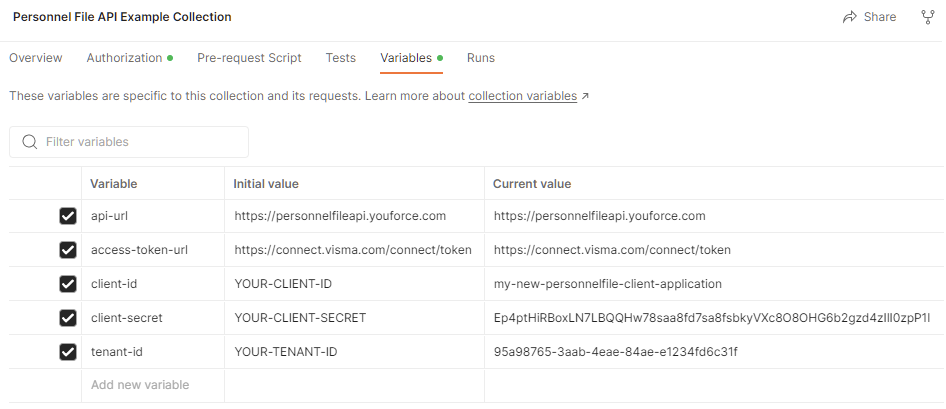
The values of these variables will be used to request a new token.
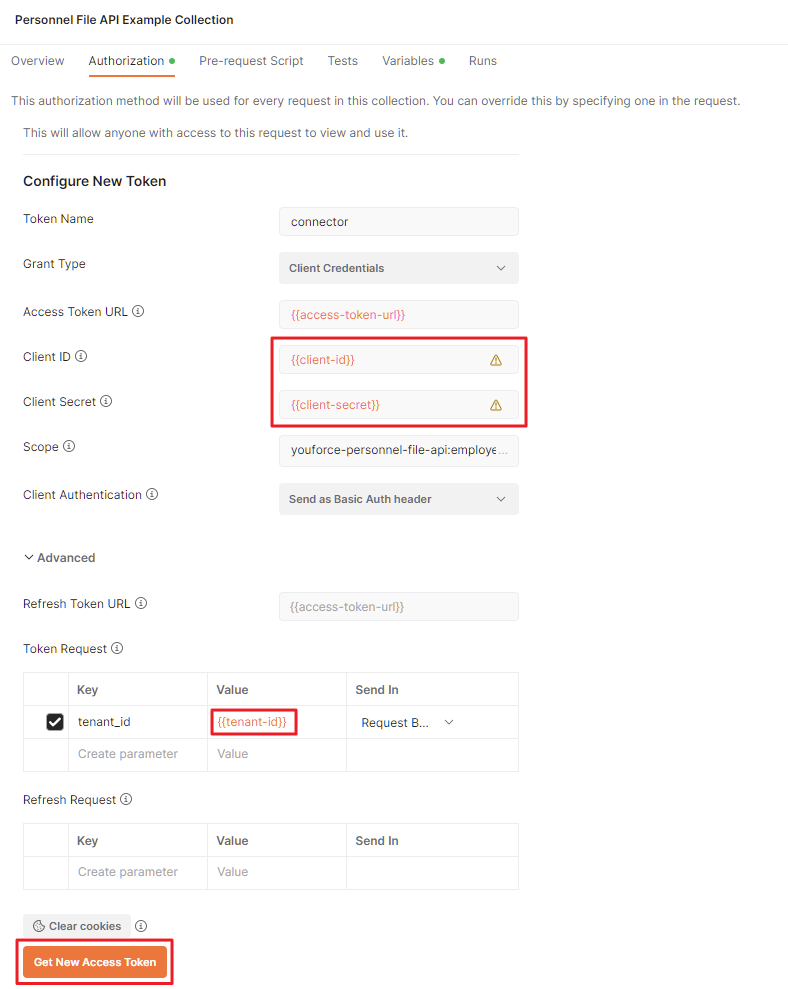
Once the request for a token is executed using the button ‘Get New Access Token’, a valid token should be received.
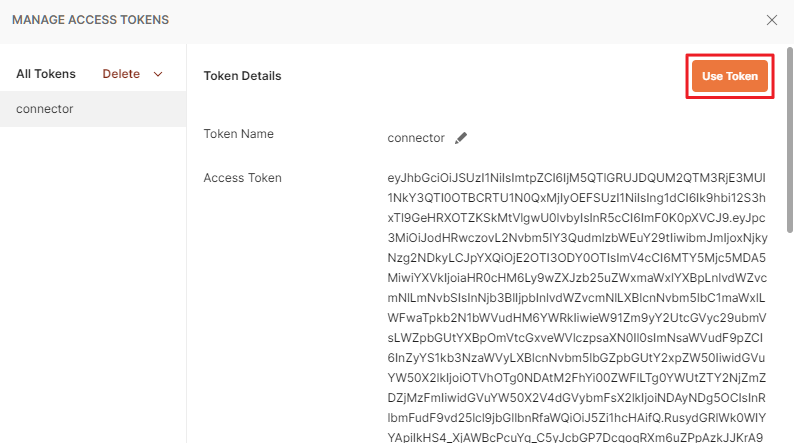
Use the button ‘Use Token’ to apply this token to the collection. This token will be stored in a variable that is used in the headers of all requests. If the token is expired the request will fail and you can request a new token again in the same way.
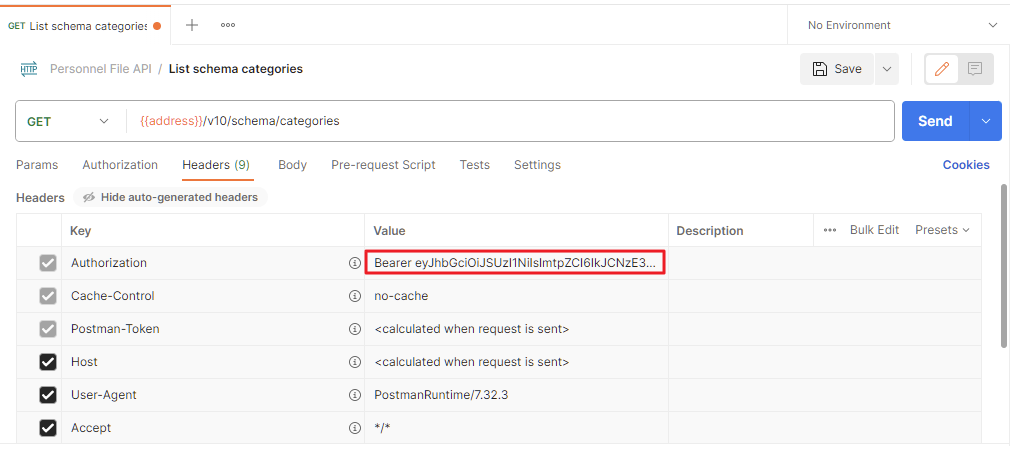
Step 3: Make the test call to the desired endpoint
Now we are able to directly call the needed endpoint. This example is requesting a list of available document types (categories), but any other get method can be used in a similar way.
Notice that, as mentioned in previous step, if the example Postman collection is being used, the token information will already be available in the AccessToken variable set in the Authorization header, otherwise, the token information should be manually added in the same header.
This should be enough to successfully run the method in the API.
